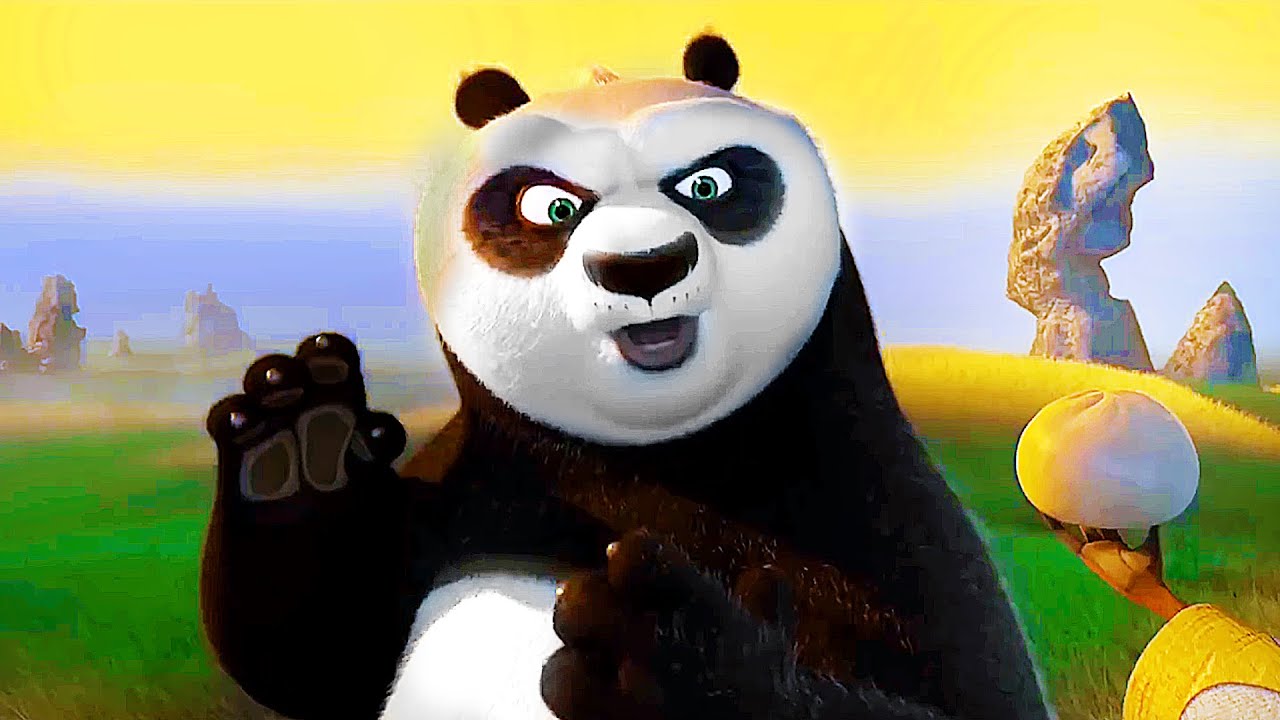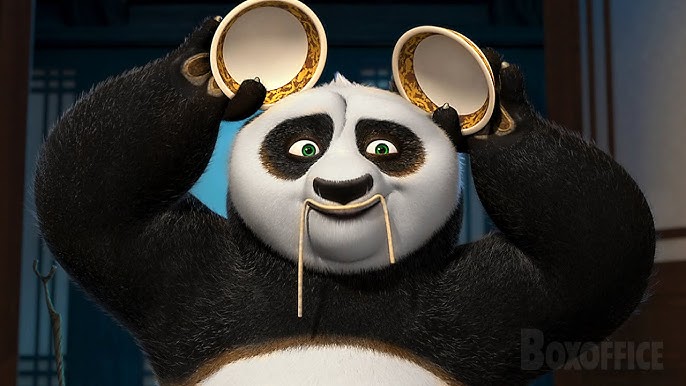🎬 Kung Fu Panda (2008)

🎬 Introduction to Kung Fu Panda (2008)
Kung Fu Panda (2008) is a delightful and heartwarming animated film produced by DreamWorks Animation. Directed by Mark Osborne and John Stevenson, this family-friendly adventure tells the story of Po (voiced by Jack Black), an overweight and clumsy panda who dreams of becoming a kung fu master. Set in a vibrant, ancient China-inspired world, Po’s journey is one of self-discovery, perseverance, and inner strength as he rises from being a noodle shop worker to the Dragon Warrior, the chosen one destined to save the Valley of Peace from an evil force.
The movie is a perfect blend of humor, action, and emotional depth, making it an instant classic. With stunning animation, memorable characters, and a message of self-belief and courage, Kung Fu Panda resonates with both children and adults alike. The film not only explores the comedic elements of Po’s unlikely rise to greatness but also delves into the themes of destiny, self-doubt, and the importance of embracing one’s uniqueness.
🎬 The World-Building and Visuals
One of the most striking aspects of Kung Fu Panda is its beautifully crafted world, which draws inspiration from Chinese culture and mythology. The filmmakers successfully combine traditional Chinese landscapes with a vibrant, animated style that creates a visually stunning and engaging experience. The Valley of Peace, where Po lives, is depicted as a picturesque town surrounded by lush, mountainous terrain and ancient temples. The vibrant colors, fluid animation, and meticulous design of the environment help bring the world of Kung Fu Panda to life, giving it a sense of depth and richness.
The action scenes, which are the heart of any kung fu film, are executed with incredible precision and energy. The martial arts choreography is both dynamic and visually impressive, with fluid motion and well-executed fight sequences that capture the grace and power of kung fu. The fight scenes are a perfect balance of humor and excitement, with Po’s awkward, comical movements contrasting against the elegance and skill of the kung fu masters. This playful juxtaposition adds to the charm and uniqueness of the film’s visual style.
The use of vivid colors and fluid animation also conveys the emotional depth of Po’s journey. As he learns kung fu, his physical transformation mirrors his emotional growth, reinforcing the film’s theme of self-empowerment. The animation also uses visual metaphors to represent Po’s internal struggle and growth, with scenes such as his dream sequence where he envisions himself as a mighty warrior, illustrating his aspirations and doubts. The combination of visual beauty and emotional storytelling elevates Kung Fu Panda from just another animated film to a visually captivating and meaningful experience.
🎬 Themes and Character Development
At its core, Kung Fu Panda is a story about self-discovery and believing in one’s potential. Po’s journey is relatable for anyone who has ever felt underestimated or out of place. He starts as an unlikely hero, dismissed by others due to his size, clumsiness, and lack of formal training. However, through his determination and the guidance of the legendary kung fu masters, Po learns that his greatest strength lies not in following the traditional path but in embracing who he truly is.
The character of Po is not just a comic figure but a well-developed protagonist with flaws, insecurities, and a deep desire to prove himself. His journey of transformation is both hilarious and inspiring. As Po trains and grows, he learns that his unique qualities—his love for food, his playful nature, and his ability to think outside the box—are not weaknesses, but rather the qualities that make him the true Dragon Warrior. This message of self-acceptance and the importance of inner strength is one of the film’s most powerful themes.
In contrast to Po, the other characters in the film, such as Master Shifu (voiced by Dustin Hoffman) and the Furious Five (Tigress, Monkey, Crane, Viper, and Mantis), each represent different aspects of discipline, strength, and wisdom. Shifu, Po’s mentor, is initially skeptical of Po’s abilities, believing that the Dragon Warrior must be a traditional, disciplined fighter. However, through Po’s unique approach to kung fu, Shifu comes to realize that true mastery comes not from rigid adherence to tradition, but from embracing one’s own strengths and potential.
🎬 Impact, Legacy, and Conclusion
Kung Fu Panda was not only a massive commercial success but also a critical one, garnering praise for its engaging storytelling, humor, and rich cultural themes. The film’s success led to two sequels, further exploring Po’s journey and his place in the kung fu world. Kung Fu Panda 2 (2011) and Kung Fu Panda 3 (2016) both continued the narrative while maintaining the emotional core and humor that made the first film so beloved. The franchise as a whole has become one of DreamWorks Animation’s most successful, with a strong fan following and continued cultural relevance.
Beyond its sequels, Kung Fu Panda has made a lasting impact on the animated film industry, setting a high standard for blending humor, action, and emotional depth. It is often cited as an example of how animated films can explore complex themes, such as personal growth and identity, in a way that resonates with audiences of all ages. The film’s message of perseverance, self-belief, and the power of inner strength continues to inspire viewers, making it a timeless classic.
In conclusion, Kung Fu Panda (2008) is a visually stunning, heartwarming, and thoroughly entertaining film that combines action, humor, and meaningful themes. It is a perfect blend of traditional kung fu elements and modern animation, creating a world that is both fantastical and deeply relatable. With its lovable characters, humorous storytelling, and inspiring message, Kung Fu Panda remains a beloved classic in the realm of animated films, standing as a testament to the power of believing in oneself and embracing one’s unique qualities.











